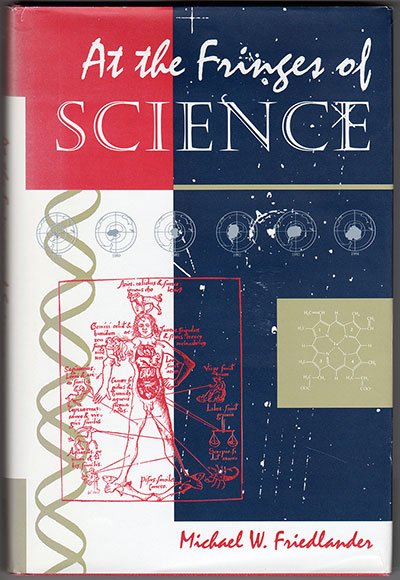Book: At the Fringes of Science (1995)

At the Fringes of Science cover
Westview Press, 1995.
Publisher's blurb
Scientific discoveries are constantly in the news. Almost daily we hear about new and important breakthroughs. But sometimes it turns out that what was trumpeted as scientific truth is later discredited, or controversy may long swirl about some dramatic claim. What is a nonscientist to believe? Many books debunk pseudoscience, and some others present only the scientific consensus on any given issue. In At the Fringes of Science Michael Friedlander offers a careful look at the shadowlands of science. What makes Friedlander's book especially useful is that he reviews conventional scientific method and shows how scientists examine the hard cases to determine what is science and what is pseudoscience. Emphasizing that there is no clear line of demarcation between science and nonscience, Friedlander leads the reader through case after entertaining case, covering the favorites of "tabloid science" such as astrology and UFOs, scientific controversies such as cold fusion, and those maverick ideas that were at first rejected by science only to be embraced later. There are many good stories here, but there is also much learning and wisdom. Students of science and interested lay readers will come away from this book with an increased understanding of what science is, how it works, and how the nonscientist should deal with science at its fringes.
Table of Contents [Click triangle or this line.]
PrefaceScience and Its Imitators
Oldies but Goodies
Hesitant Revolutions— Successful and Failed
Science and Its Practice
The Machinery of Science
Respectable Maverick Ideas
Walking on Water or Skating on Thin Ice
Tabloid Science
Pscience
Fraud: Yes, No, and Maybe
Political Pseudoscience
Taking Stock
Responding to Fringe Science
Epilogue – 1998
The book was an alternate selection-of-the-month for the Astronomy Book Club.
Reviews and Publicity (from many angles)
- Westview Press catalog, spring 1995 with review quotes from Arthur C. Clarke and Martin Gardner (!).
- Publisher Westview Press' current page about the book. (Westview Press was acquired by Routledge/Taylor & Francis Group some years back.)
- Washington University's Master of Liberal Arts program (part of University College) held a reception in honor of the book's release in October 1995.
- Skeptical Inquirer review by Barry Markovsky, Jan/Feb 1996, pp49-50.
- American Library Association review, as seen from UChicago Library Catalog.
- Review by Harold W. Lewis (UC-Santa Barbara) in Physics Today, 1996. [DOI]
-
A Scientist's View of Pseudoscience
Published in Metascience, 1995.
Brian Martin, Professor of Social Sciences (emeritus as of 2022), University of Wollongong, Australia, 1995.
He complains about the treatment of constructivists in the book. (Here's Wikpedia's defintion of " Constructivism (philosophy of science).") - Review
in The Montana Professor
by William W. Locke, Earth Sciences, Montana State University-Bozeman, 1996. - Review
by Allan H. Harvey, 1996.
Interesting and thoughtful review from a Christian perspective. - Westview Press postcard (6x9") for paperback edition, 1998. With review blurbs.
Other citations and references
- Is Defeating Aging Only A Dream?
The SENS Challenge, MIT Technology Review, July 2006.
This was a challenge to the potentially pseudoscientific anti-aging theories in "Strategies for Engineered Negligible Senescence" (SENS) promoted by Aubrey de Grey. In "Submission 3" (on above page), there is a link to a PDF of a paper, 1996: MIT SENS Challenge-Estep Life Extension Pseudoscience and the SENS Plan, which quotes and references Fringes of Science. - The book is also quoted and referenced in a Wikipedia page about Fringe Science.
- Two years after initial publication, the book was translated into Japanese.